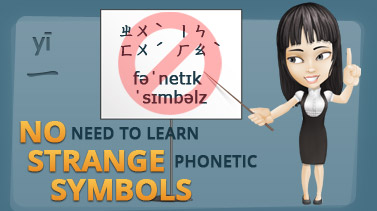Standard Mandarin Blog
How the science of popcorn can help you learn Chinese pronunciation
11.12.2013 14:30:52
 Are you aware that some of the most recent scientific studies on popcorn can benefit your Chinese learning?
Are you aware that some of the most recent scientific studies on popcorn can benefit your Chinese learning?
It's not a joke.
You may already have heard about the discovery. Eating popcorn in the cinema makes you partly immune to the advertising before the actual movie. Why is that? And what does it have to do with learning Chinese?
Click here to read moreBecome a Pinyin Super Hero
10.12.2013 14:23:42
What is that? Is it a bird? Is it an airplane? No, it is the Pinyin Super Hero!
40 million people worldwide are learning Chinese, according to some estimates. You can stand out, by perfecting your pronunciation. Starting sooner is much better than later.
Though pinyin may seem simple, the infographic on Chinese pronunciation and pinyin shows that there is more to it than meets the eye. Still, becoming an expert in the field of pinyin is achievable!
Click here to read moreInfographic - Why bother learn correct pronunciation?
30.10.2013 12:19:14
Since pinyin is so easy to get started with, and since with it you can expand your Chinese vocabulary in no time, why would you then bother put so much effort into learning correct pronunciation? Why not just add some grammar, vocabulary, a few idioms and settle with an average level of Chinese? That would impress most people anyway, wouldn't it?
Well, you might decide to do it that way. But if you intend to learn more than the survival Chinese for a single travel journey to China, then you will definitely not regret spending the needed effort on pronunciation.
Click here to read moreInfographic - 5 Common Misconceptions Regarding Learning Chinese
24.10.2013 08:08:25
Some misunderstandings are quite amusing, like this joke:
I said to my wife last night, "I fancy a takeaway."
She said, "Are you talking Chinese?"
I said, "No, did it sound Chinese?"
Misunderstandings or misconceptions can be fun, but they're not always that great. Below you'll find 5 common misconceptions regarding the Chinese language. I hope the associated illustrations will amuse you, in which case these misconceptions will be fun after all.
Click here to read moreInfographic - Chinese Pinyin, the easy and the hard - 3 vs 3
18.10.2013 10:21:05
Didn't you feel relieved at first when you learned that Chinese has pinyin, to help you learn pronunciation? Many learners of Chinese even feel in the beginning that they could spare themselves a lot of effort if they just settle with learning pinyin, and forget about the characters.
It doesn't work that way though. If you want to learn proper Chinese conversation skills, you will have to get acquainted with the characters. That being said, let's look at the third section of the infographic on Chinese pronunciation and pinyin, which focuses on pinyin only.

For one thing, we don't have to learn a whole new set of letters, symbols or characters. We are already familiar with all the letters in the pinyin system.
Pinyin isn't the only sound script out there. Take a look at what Daidai is teaching in the illustration here. Can you read the two first lines of.. well.. script? It is written in Zhuyin (aka "bopomofo"). Its pinyin equivalent would be "zhùyīn fúhào". So which do you prefer to learn?
Both pinyin and zhuyin is just a set of phonetic symbols carrying no meaning other than pure pronunciation. English has the same, since not all written words are pronounced exactly as they are written. Take an example, how do you pronounce the English word "read"? That would depend on the context. In some cases it must be pronounced like the word "red", whereas in other contexts it must be pronounced like the word "reed".
Are you able to read the last two lines of symbols in the illustration? What does it mean? It is in fact "soundscript" for the English words "phonetic symbols".
So the first good thing we can say about pinyin, is that it is quick to get started with. Just compare it with Zhuyin or even English phonetic symbols.
Latest Blog Posts
11.12.2013How the science of popcorn can help you learn Chinese pronunciation 10.12.2013
Become a Pinyin Super Hero 30.10.2013
Infographic - Why bother learn correct pronunciation? 24.10.2013
Infographic - 5 Common Misconceptions Regarding Learning Chinese 18.10.2013
Infographic - Chinese Pinyin, the easy and the hard - 3 vs 3 08.10.2013
Infographic - 3 vs 4 Points On Chinese Pronunciation, The Easy And The Hard 05.10.2013
Infographic - 3 Reasons For Learning Chinese Pronunciation First 29.09.2013
New Infographic On Chinese Pronunciation And Pinyin 20.08.2013
Standard Mandarin Blog Created
